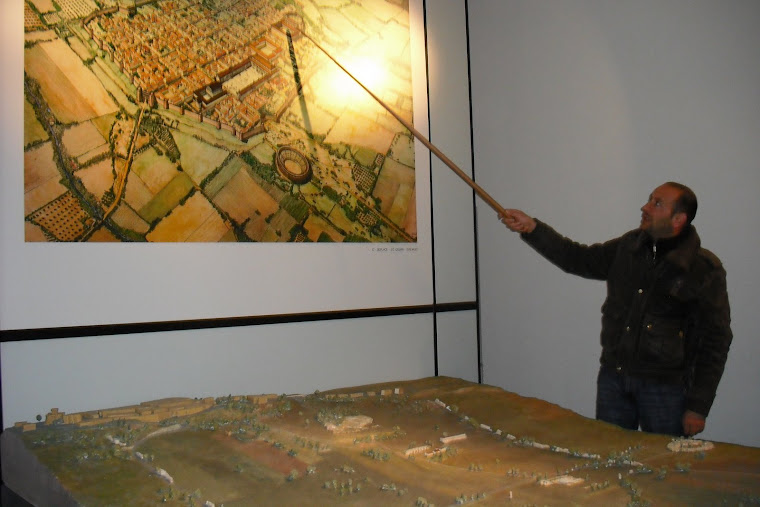
History of Gladiators
The first gladiators were part of a sacrificial rite adopted from the Etruscans. First introduced to Rome in 264 BC, the sons of Junius Brutus honored their father at his funeral by matching three pairs of gladiators. Gladitorial combat was originally part of a religious ceremony that was intended to insure that the dead would be accompanied to the "next world" by armed attendants and that the spirits of the dead would be appeased with this offering
This roman mosaic shows triumphant and fallen gladiators; some victorious gladiators became very famous and powerful. Many gladitorial battles were fights to the death.
Gladiators were generally condemned criminals, prisoners of war or slaves bought for this purpose. Some free men entered this profession in hopes of popularity and patronage by wealthy citizens. The free men were often social outcasts, freed slaves or discharged soldiers. They volunteered to be gladiators and by the end of the Republic made up half the number of combatants. Gladiators were trained in combat at special, imperial schools. The gladiator games were presented for ten to twelve days each year, and often correlated was Saturnalia (a festival celebrating the god Saturn). The most famous amphitheater was the Colosseum, the Flavian Amphitheatre which was built around 80 AD. It seated 50,000 people. The monumental size of this structure and its central location in the city speaks directly to the importance of this building and consequently this sport in the Roman Empire. It is said to note that the popularity of these spectacles led to the death of tens of thousands of animals. Entire species were no longer found in their native habitat. In the afternoon you would see gladiators paired; evenly matched, but not identical so there would be no competitive advantage. You might see retiari who were lightly armed, but must fight against the secutores or myrmidon's who were protected by heavy armor that reduced their mobility. Depending on the Emperor of the day you would see dwarfs fighting women, amazons, senators, and even emperors. Gladiators and the arenas they occupied were dangerous and very appealing to the roman people. Most of these gladitorial battles were fought to the death unless the life of the losing gladiator was spared by the vote of the audience. Thumbs up meant death for the loser, while a thumbs down granted a reprieve. Unfortunately, for the vanquished combatants, this reprieve rarely came. Some gladiators enjoyed a good life, and a few even reached celebrity status. GLADIATOR Weapons : warchain, net, trident, man catcher, nunchaku, lassoo Manuevres : parry, dodge, entangle, disarm, stunblow, knockout Armour : light ring, shoulder plates, helm Attributes : Dexterity + Stamina Races : Thralls, Danuvians, Kang, Imrians, Zandir Description : This style offers proficiency in the most exotic weaponry available to the humanoid civilization. Gladiators train in circuses and arenas to provide spectacles, but they also become specialists in combat that disables and captures the opponent rather than kills him quickly. Gladiators also have at the disposal special weapons with unique features not available to others. Many bounty hunters, sportsmen, big-game hunters and slavers practise this style of warfare.
Men fought other men in gladitorial battles, but they also fought wild animals, sometimes imported from the far corners of the roman empire.
Text and image taken from the site : http://vasia_v.tripod.com/moviegladiator/id2.html









Nessun commento:
Posta un commento